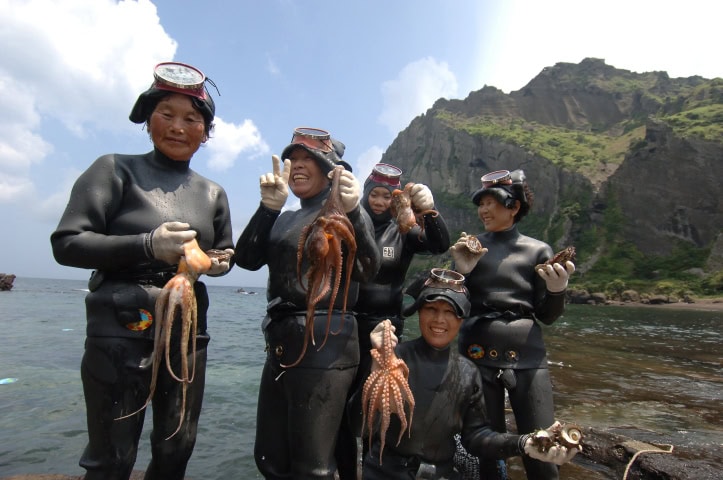Description
Jeju’s diving tradition dates back to 434 A.D 100. Diving was was originally exclusively done by males, with the exception of women who worked along with their husbands. The first mention of female divers in literature does not come until the 17th century when a monograph of Jeju geography describes them as jamnyeo (literally “diving women”)
By the 18th century, female divers (haenyeo), outnumbered male divers. There are several theories for this. For example, in the 17th century, a significant number of men died at sea due to war or fishing accidents. Another theory is that women have more subcutaneous fat and a higher shivering threshold than men. An 18th-century document records that taxes of dried abalone were imposed on ordinary people, forcing many women to dive in cold waters while pregnant.
Whatever the reason, many of the haenyeo replaced their husbands as the primary laborer. This trend was especially prominent after the Japanese colonized Korea in 1910. Until this point, much of what the haenyeo harvested was given to the Choson government as tribute. The Japanese, however, abolished this tradition. They allowed haenyeo to sell their catch at market and make a profit. Japanese and Korean merchants also hired haenyeo to work for them in Japan and Korea as wage-laborers, increasing their financial situations.
Wherever haenyeo worked, their wages, on average, constituted 40 to 48 percent of a typical family’s income. This trend continued long after Japanese colonization. In the early 1960s, haenyeo harvests accounted for 60% of Jeju’s fisheries revenue and 40% of haenyeo husbands remained unemployed.
Interested in visiting Jeju? Book a custom tour with This is Korea: https://thisiskoreatours.com/korea-tours/

